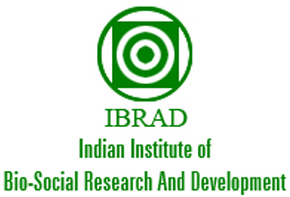Convention on Biological Diversity (CBD)
Humans depend on biological resources for meeting their survival and sustenance needs. It is recognized as a global asset of the highest value for the present and future generations. However, the biological resources are depleting at an alarming rate mainly caused by human activities.
An Ad Hoc Working Group of Experts on Biological Diversity was convened by the United Nations Environment Programme (UNEP) in November 1988 to explore the need for an international convention on biological diversity. It was followed by the formation of the Ad Hoc Working Group of Technical and Legal Experts to prepare an international legal instrument for the conservation and sustainable use of biological diversity, in May 1989. The Nairobi Conference for the Adoption of the Agreed Text of the Convention on Biological Diversity was held in May 1992.
The Convention was opened for signature on 5 June 1992 at the United Nations Conference on Environment and Development (the Rio “Earth Summit”) till 4 June 1993. During this period 168 countries have signed. The Convention came into force on 29 December 1993 with the three main objectives of
- conservation of biological diversity
- the sustainable use of its components
- fair and equitable sharing of benefits arising from the use of genetic resources
The Convention is implemented through programmes and strategic plans adopted by the Conference of Parties (CoP) to the CBD which are then incorporated in the National Biodiversity Action Plan (NBAP) by the Parties.
Implementation is monitored by the CoP to the CBD through periodic national reports.
Preparation of NBAP or equivalent documents and preparation of National Reports are two mandatory obligations of CBD as per Article 6 and Article 26 of the Convention, respectively.
Parties to CBD are also required to develop National Biodiversity Targets (NBTs) in line with the 20 global Aichi Biodiversity Targets taking into account their national priorities and needs towards achieving the globally shared Biodiversity Vision 2050.
Biodiversity Vision 2050
“By 2050, biodiversity is valued, conserved, restored and widely used, maintaining ecosystem services, sustaining a healthy planet and delivering benefits essential for all people.” (CBD Decision X/2).
The Conference of Parties
The Conference of the Parties (CoP) is the governing body of the Convention, and advances implementation of the Convention through the decisions it takes at its periodic meetings. There are 196 parties including 195 countries and European Union.
So far 14 ordinary meetings, and one extraordinary meeting of the CoP are held from 1994. Following a change in the rules of procedure in 2000 it is being held in every two years. The CoP 15 will be held in Kunming, China in two phases. Phase one will be held virtually, from 11 to 15 October and Phase two will be an in-person meeting in Kunming, from 25 April to 8 May 2022.
The Fifteenth meeting of the Conference of the Parties (COP 15) will be held in Kunming, China in two phases. Phase one takes place virtually, from 11 to 15 October and will include a High-Level Segment from 12 to 13 October 2021. Phase two will be an in-person meeting in Kunming, from 25 April to 8 May 2022.
In 2011, the United Nations General Assembly (UNGA), at its 65th meeting, passed Resolution 65/161, declared the period 2011 – 2020 to be “the United Nations Decade on Biodiversity, with a view to contributing to the implementation of the Strategic Plan for Biodiversity for the period 2011-2020”.
India as a party of the CBD
India became a Party to the CBD in 1993, and prepared its first NBAP entitled “National Policy and Macro Level Action Strategy on Biodiversity” in 1999 which was revised and updated in 2008 and 2014. India enacted the Biological Diversity Act in 2002 and The Biological Diversity Rules in 2004 in pursuance to the Convention on Biological Diversity (CBD). The Key laws related to biodiversity in India include the Indian Forest Act, 1927, Wildlife (Protection) Act (1972), Forest Conservation Act (1980), Environment Protection Act (1986), Biological Diversity Act (2002), Forest Rights Act 2006.
India became a Party to the CBD in 1993, and prepared its first National Biodiversity Action Plan in 1999 which was modified and updated in 2008 and 2014.
India has also developed 12 NBTs by incepting all the 20 ABTs.




